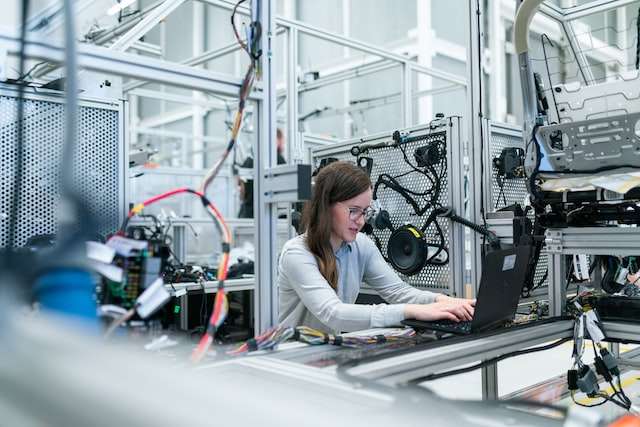How Technology Can Eliminate Workplace Hazards
According to the World Health Organisation, work-related accidents can not only affect workers’ health but also reduce productivity and impact household incomes. Although the percentage of injuries at the workplace has fallen since a decade ago, businesses still struggle with providing a safe environment and proper training on-site or in a building. So, to decrease the probability of employee injury, here are some efficient ways to eliminate workplace hazards by using technology.
Create a reporting system
Whatever your company does, it’s important to have an official space for reporting hazards and other accidents because there are plenty of reasons why such an occurrence is unreported:
- Workers are expecting that injuries are part of the job, so they don’t find accidents uncommon;
- Some employees believe their symptoms are not that serious to seeking medical help, so they ignore it;
- The social pressure of being perceived as weak or sluggish may also contribute;
- Some employers refuse to pay workers if they miss work or need to be reassigned to lighter duties;
- Although it’s an illegal act, employees fear that they will be fired if they are injured and can’t work anymore;
- The lack of knowledge is also a factor in few reports because workers don’t know where and when to report an accident;
All these issues can be easily solved if the company provides a standard employee reporting system. Such a tool needs to be presented to them, but workers also need training regarding using such a platform, so managers need to implement such a safe company culture. There are plenty of affordable and easy-to-use software solutions for your business, so make sure you cover this issue to provide a safe space for your team.
Make an audit on possible accident causes
As a manager, you should know what places or machinery are prone to create an accident, so it’s best to audit your company’s practices and tools to ensure you can find solutions to them. Depending on the industry, there are plenty of injury possibilities, like:
- When working at height, the risks include falling and falling objects;
- When dealing with heavy equipment, workers are prone to electrical shock or being crushed by such machinery;
- In the construction industry, the risk of inhaling toxic fumes and slipping is high;
- Driving machinery can expose workers to crashes and breathing toxic vehicle gases;
- Working in a hot environment can cause fire, explosions and heat stress;
- Utilising hazardous materials leads to a huge danger of explosion, fire and oxygen deprivation;
Know that employees can be eligible to sue a company if they get injured due to its negligence. Many authorities allow workers to make an accident at work claim in the UK if they’re able to provide evidence of how the company breached its duty and the medical records show the consequences of such acts. According to the Health and Safety at Work etc. Act 1974, employees can and will get compensation for a company’s negligence, which can be enormous if the injury is grave.
Carry our regular reviews
After assessing what the issues are and conducting an audit, it’s important to remain consistent about your safety program and carry out regular reviews. A software program can help you plan them monthly to ensure that reports are made and that the input from specialists is efficient. This step is one of the most important because even if most businesses start such a program, they fail to follow up with improvements and other considerations.
Such review software will also help you make predictions regarding your company so you’ll know what to expect from the market requirements. By staying up-to-date with the latest safety regulations, you may also get to know what your competition is doing or what are employees’ demands on current jobs. So, you’ll be able to conduct better recruitment sessions and, therefore, provide your business with a fresh new start.
Provide training
Finally, proper training is the best way to ensure that your employees know what they are doing and acknowledge the risks, no matter your business activity. Even remote workers are exposed to certain dangers regarding their position while sitting at the desk or their eyes’ health. Managers should provide training and follow-up with more insight on the importance of a good posture so they can make employees aware of their responsibility. At the same time, ergonomic equipment should be supplied because outdated devices and seating options can be more damaging than poor posture.
Regarding other industries, workers should always have their PPE equipment in excellent condition, but some improvements that need to be considered are:
- Anti-fog and anti-scratch features on safety eyewear, more flexible frames and chemical splash-resistant options;
- Wearable technology for tracking biometrics, enabling video and voice calls and scanning barcodes;
- Visualisation technology (VR, AR, 3D) for getting crucial information about the environment or physically experiencing the space that’s not built yet;
- Drones, robotics and remote-control vehicles for providing innovative ways for employees doing their jobs without the risk of them getting injured;
The benefits of safety technology in a company
Technology solutions or “safety tech” are beneficial in a company if they’re correctly assessed. But here’s what it can bring to your business:
- Tech is improving communication. To ensure that every employee is safe, managers must provide a unique communication channel for them to use whenever needed. So, if communication is efficient, a safe environment can be fostered.
- AI and remote video monitoring can help identify issues or compare the efficiency of safety procedures. For example, drones can inspect hidden or high-risk areas so accidents can be reduced;
- 3D visualisation can help employees immerse themselves into a virtual world to experience more hands-on training and apply those practices better;
Final thoughts
Workplace hazards are usually the cause of negligence, but they can lead to accidents and serious injuries if they’re not taken care of at the right time. So, each business should implement and frequently use a safety program that aligns with the company’s culture and fits the daily tasks to provide an efficient system of safety and security.





